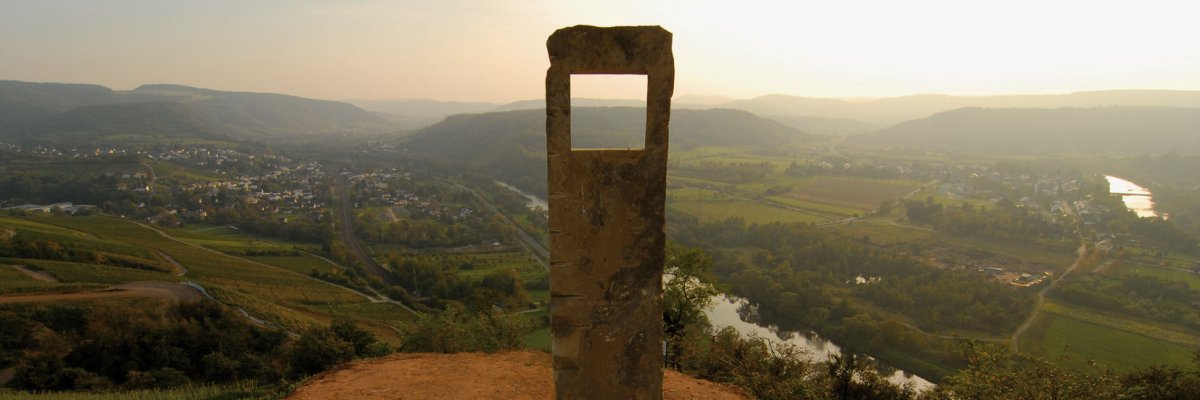"Sculptures by the River"
FROM REPRESENTATIVE TO COMMUNICATION
from dr Gabrielle Lohberg
Up until the 20th century, outdoor art had the function of a monument, was placed as a friendly decor in parks and in urban areas, or programmatically commented on the importance and dedication of buildings and squares. Above all, the heroes on pedestals and horses kept a safe distance from the public, which should admire but not participate, both formally and through their importance as monuments. A paradigm shift has taken place since the 1960s at the latest. To this day, sculptures in public space are often "unprotected art, exposed to their involuntary audience for better or worse and without institutional protection" (Stella Rollig, customer service and business advice, in "Zur Sache Kunst am Bau - Ein Handbuch, ed. By Markus Wailand, Vitus H. Weg, Vienna 1998, p.96). It is defined less by representation than by communication.
From the planning of the 3rd symposium for sculpture in the municipality of Konz to the development of the sculpture trail, the mediation accompanies the entire project like a theme with variation. It began with the first conversations and discussions in the communities with citizens, mayors, property owners, municipal authorities and the artists. The choice of the respective location with regard to the process of the artistic intervention was very central for all participants. They chose places to which they could react artistically and which they could redefine as places. Working outdoors, the process of appropriating a space, is repeatedly accompanied by passers-by who watch, comment and ask questions. In this way, artistic mediation opens up its public space out of the discourse. The local encounters, which are scheduled for a few weeks, develop into lasting social and artistic markers. The idea of the symposium was to capture situations in the landscape in their particularity, to artistically work out a spatial concept through a sculpture and to interest the viewer in it. The organizers and the artists involved managed this in very different ways, but succeeded in all aspects. When choosing the artists, not only stone sculptors were considered, as in previous symposia, but also artists who prefer metal for their design.
The works of Sigrún Ólafsdóttir and Werner Bitzigeio can hardly be more different in their implementation. The latter pursues a consistent geometric matrix in the design, the rectangles of which are joined together to form a spherical shape - the "squaring of the circle" - and have perspective surprises in store in their effect. The Icelandic artist introduces a light, multiform flaming movement into the landscape, which develops freely in the vertical. What both artistic approaches have in common is the linear design in the material steel, which makes the sculptures appear like drawings in space.
The sculptors favored very different landscapes and situations. Maria Claudia Farina , Jurgen Waxweiler and Eileen MacDonagh allow the viewer to look into the landscape with their sculptures. They include the motif of seeing, recognizing and understanding in their concept. Her works on mountain slopes or knolls not only allow a far-reaching view, but are also visible from afar. John Michler , Birgit Knappe and especially Thomas Link chose places in which their sculptural places are embedded in the landscape. With the horizontal alignment of the stone blocks, they emphasize a formal approximation of the course of valleys and contour lines. With their works they create new realities that they redefine in a personal and social sense. Dorsten Diekmann and Tone Kale deliberately set themselves apart from the expanding landscape with the vertical arrangement of their sculptures. But even these landscape markings, exposed like exclamation marks, refer in their internal drawing and in their contour to movements, vegetation and formations in nature and do not appear as foreign bodies.
All works have the inherent tension of asserting themselves confidently through large dimensions in the landscape and at the same time integrating themselves. When curiously perceiving the sculptures, an incomparable symbiosis of unknown insights into the landscape arises, the experience of impressive sculptures in the changing atmosphere and the temporal dimension - be it the seasons or times of day and your own sense of time. The visible influence of light, shadow and the weather on the carefully treated surfaces, the stringent design, the development of the sculptures in space and the fascinating locations give all the works an extraordinary presence.










